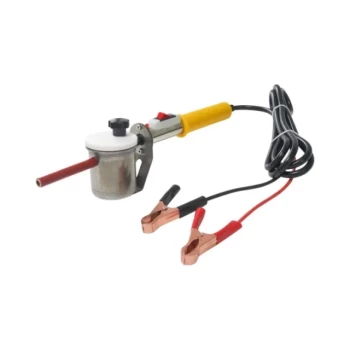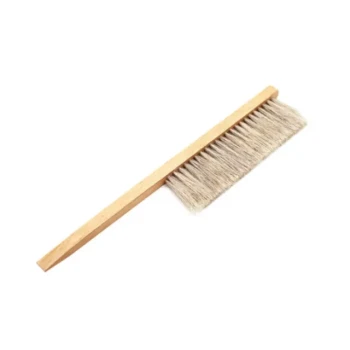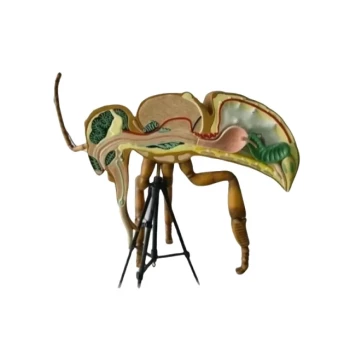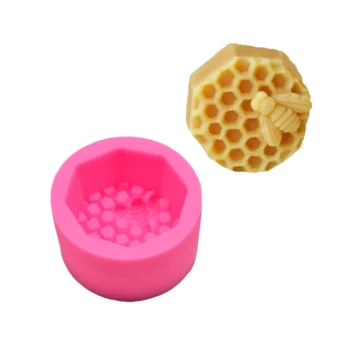The primary methods for applying oxalic acid in beekeeping are vaporization (sublimation), solution dribbling, and a solution spray specifically for package bees. These methods are used as a "clean-up" treatment to control Varroa destructor mites, typically when a colony has little to no sealed brood, which is when the treatment is most effective.
The choice between vaporization and dribbling is not about which is "better," but which is more appropriate for your specific goals, equipment budget, and commitment to personal safety. Both are highly effective when applied correctly and at the right time.
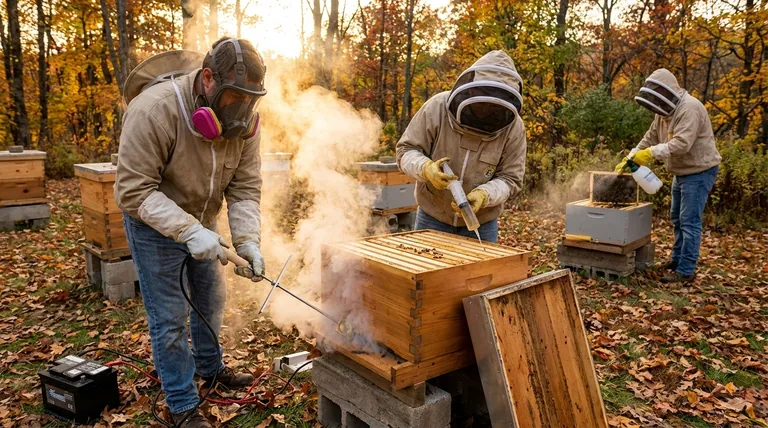
Why Oxalic Acid is a Critical Tool
Oxalic acid is a naturally occurring organic compound found in many plants, including honey. For beekeepers, it is a key component of an Integrated Pest Management (IPM) strategy for controlling Varroa mites, one of the most significant threats to honey bee health worldwide.
Targeting Phoretic Mites
The key to understanding oxalic acid's use is knowing that it is a contact miticide. It is only effective against Varroa mites that are physically on the bodies of adult bees, a stage known as the "phoretic" phase.
Oxalic acid does not penetrate the wax cappings of brood cells. Therefore, it has no effect on mites that are reproducing within those sealed cells.
The Importance of Timing
Because it only kills mites on adult bees, application timing is paramount. The highest efficacy is achieved when the colony is broodless or has very little brood. This often occurs during late fall, early winter, or during an artificially induced brood break.
A Closer Look at Application Methods
Each of the three approved methods serves a specific purpose and has a distinct procedure.
The Vaporization (Sublimation) Method
In this method, oxalic acid dihydrate crystals are placed in a specialized heating device called a vaporizer. The device is inserted into the sealed hive, and the crystals are heated until they sublimate, turning directly into a gas.
This fine vapor coats the bees and surfaces inside the hive, killing the phoretic mites on contact. It is generally considered fast for treating multiple hives and less disruptive to the colony.
The Dribble (Trickle) Method
This method involves mixing oxalic acid with a warm 1:1 sugar syrup solution. A large syringe is then used to dribble a measured amount of the solution directly onto the bees clustered between the frames.
The bees ingest and share the syrup, spreading the acid throughout the cluster. This method requires no specialized heating equipment, making it a low-cost entry point for treatment.
The Spray Method for Package Bees
This application is exclusively for newly installed package bees. A light solution of oxalic acid and sugar syrup is sprayed directly onto the bees before they are installed in their new hive.
Since a package has no brood by definition, all mites present are in the phoretic stage, making this a highly effective way to start a new colony with a very low mite load.
Understanding the Trade-offs
Choosing a method requires a clear understanding of the safety, cost, and impact on both the beekeeper and the bees.
Beekeeper Safety is Non-Negotiable
Oxalic acid vapor is a severe lung and respiratory irritant. The vaporization method absolutely requires the use of a properly fitted respirator with acid gas cartridges, along with safety glasses and gloves.
The dribble method is less of an inhalation risk, but chemical-resistant gloves and eye protection are still essential to prevent skin and eye damage from the acidic syrup.
Equipment and Efficiency
Vaporization requires a higher upfront investment in a vaporizer and power source (like a car battery). However, it is significantly faster per hive, making it more efficient for beekeepers with many colonies.
The dribble method requires minimal equipment—just a syringe and mixing supplies. It is, however, more time-consuming and invasive as it requires opening each hive.
Impact on the Colony
The dribble method can be harder on the bees, as they must consume the acidic syrup. It should only be applied once during the treatment period, as repeated applications can be harmful.
Vaporization is generally considered less stressful for the colony. It does not require fully opening the hive, minimizing heat loss during colder months.
Choosing the Right Method for Your Apiary
Your choice should be a deliberate one based on your apiary's needs and your personal priorities.
- If you are treating newly installed package bees: The spray method is the only approved and practical application.
- If your primary focus is low initial cost for a few hives: The dribble method is a highly effective and accessible choice.
- If your primary focus is efficiency and minimizing colony disturbance: The vaporization method is a superior long-term investment, provided you commit to using the required safety equipment.
By understanding these methods and their trade-offs, you can confidently integrate oxalic acid into your Varroa management plan to ensure the long-term health of your colonies.
Summary Table:
| Method | Best For | Key Equipment | Safety Considerations |
|---|---|---|---|
| Vaporization (Sublimation) | Efficiency, minimizing colony disturbance | Vaporizer, power source, respirator | Severe lung irritant; requires respirator & gloves |
| Dribble (Trickle) | Low initial cost, small-scale apiaries | Syringe, mixing supplies | Skin/eye irritant; requires gloves & eye protection |
| Spray | Newly installed package bees | Spray bottle | Low inhalation risk; requires gloves & eye protection |
Protect Your Investment with Professional-Grade Beekeeping Supplies
Choosing the right Varroa mite treatment is critical for your apiary's health and productivity. Whether you manage a few hives or a large commercial operation, having reliable, high-quality equipment is non-negotiable for effective oxalic acid application.
HONESTBEE is your trusted wholesale partner for beekeepers and distributors. We supply the durable, dependable supplies you need to implement these treatments safely and effectively, from vaporizers and syringes to full personal protective equipment (PPE) kits.
Let us help you safeguard your colonies.
Contact HONESTBEE today to discuss your wholesale needs and ensure your apiary is equipped for success.
Visual Guide
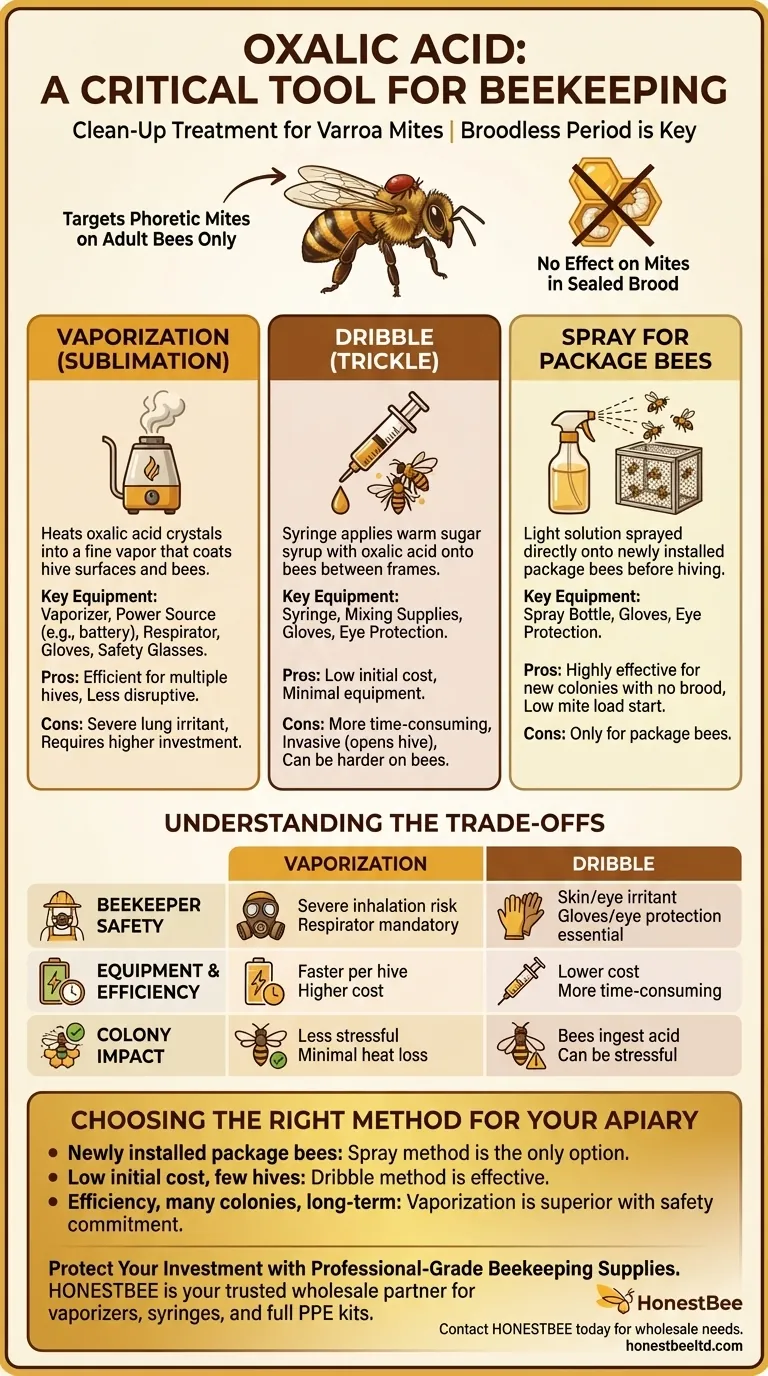
Related Products
- Oxalic Acid Vaporizer 12V for Bee Varroa Mite Treatment
- Durable 12V Oxalic Acid Vaporizer for Varroa Mite Treatment Beehive Beekeeping Tool
- Heavy Duty 12V Oxalic Acid Evaporator Vaporizer for Bee Varroa Mite Treatment Beekeeping Fumigator Atomizer
- 12V Bee Mite Removal Evaporator Oxalic Acid Vaporizer for Bee Fumigation Treatment 180W Atomization
- Varroa Easy Check Mite Tester Kit Counter Alcohol Wash Jar
People Also Ask
- What is the most common method of applying oxalic acid for mite control? Dribble vs. Vaporization for Varroa
- What safety precautions should be taken during Oxalic Acid Vaporization? Essential PPE & Procedures
- Can oxalic acid vaporization be used with honey supers on the hive? Ensure Legal Compliance & Honey Safety
- What should be inserted under the hive to reduce drafts during oxalic acid vaporization? Ensure Effective Varroa Mite Control
- How is the oxalic acid solution prepared for vaporization? No Solution Needed—Use Dry Crystals for Varroa Control



